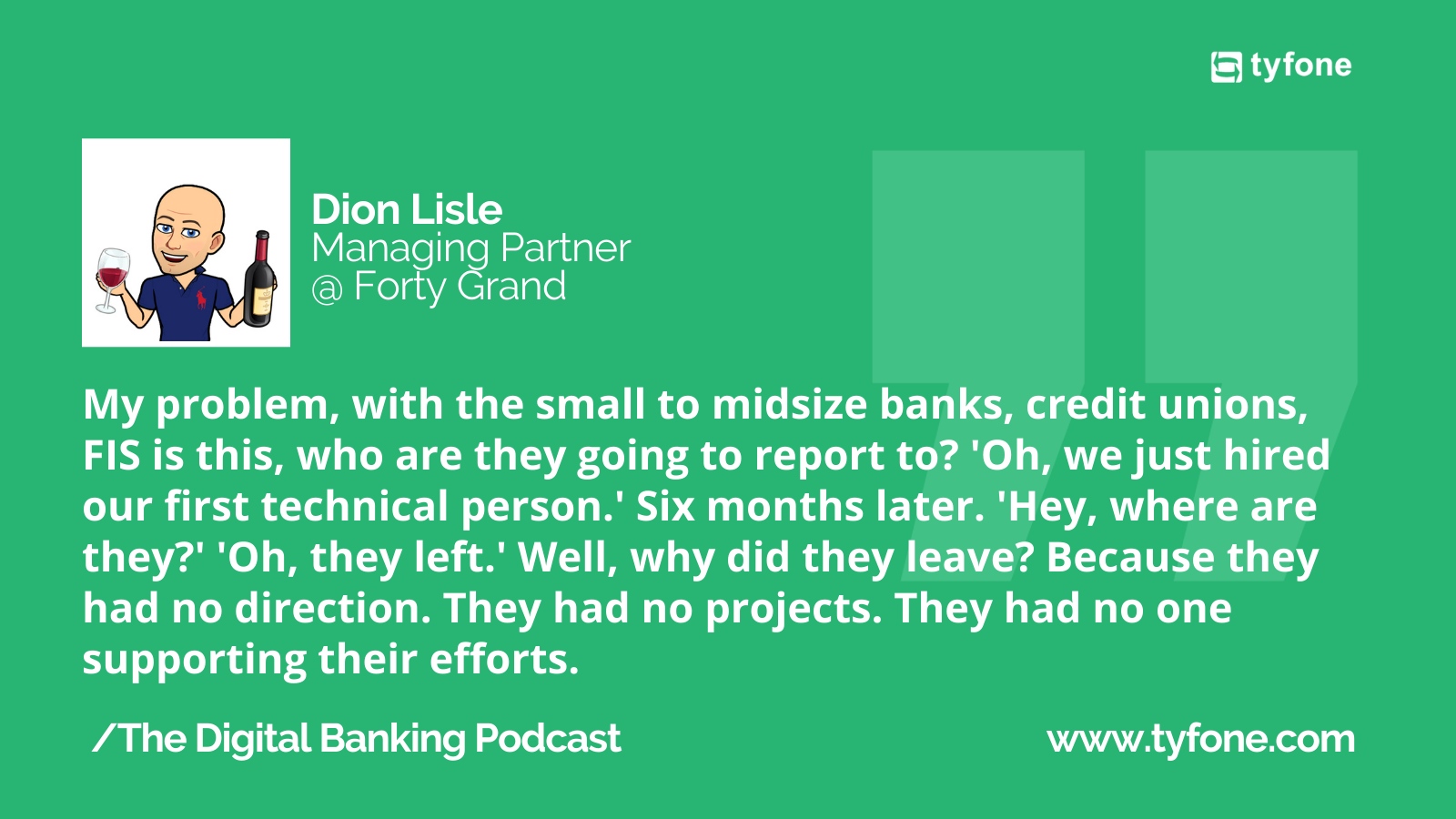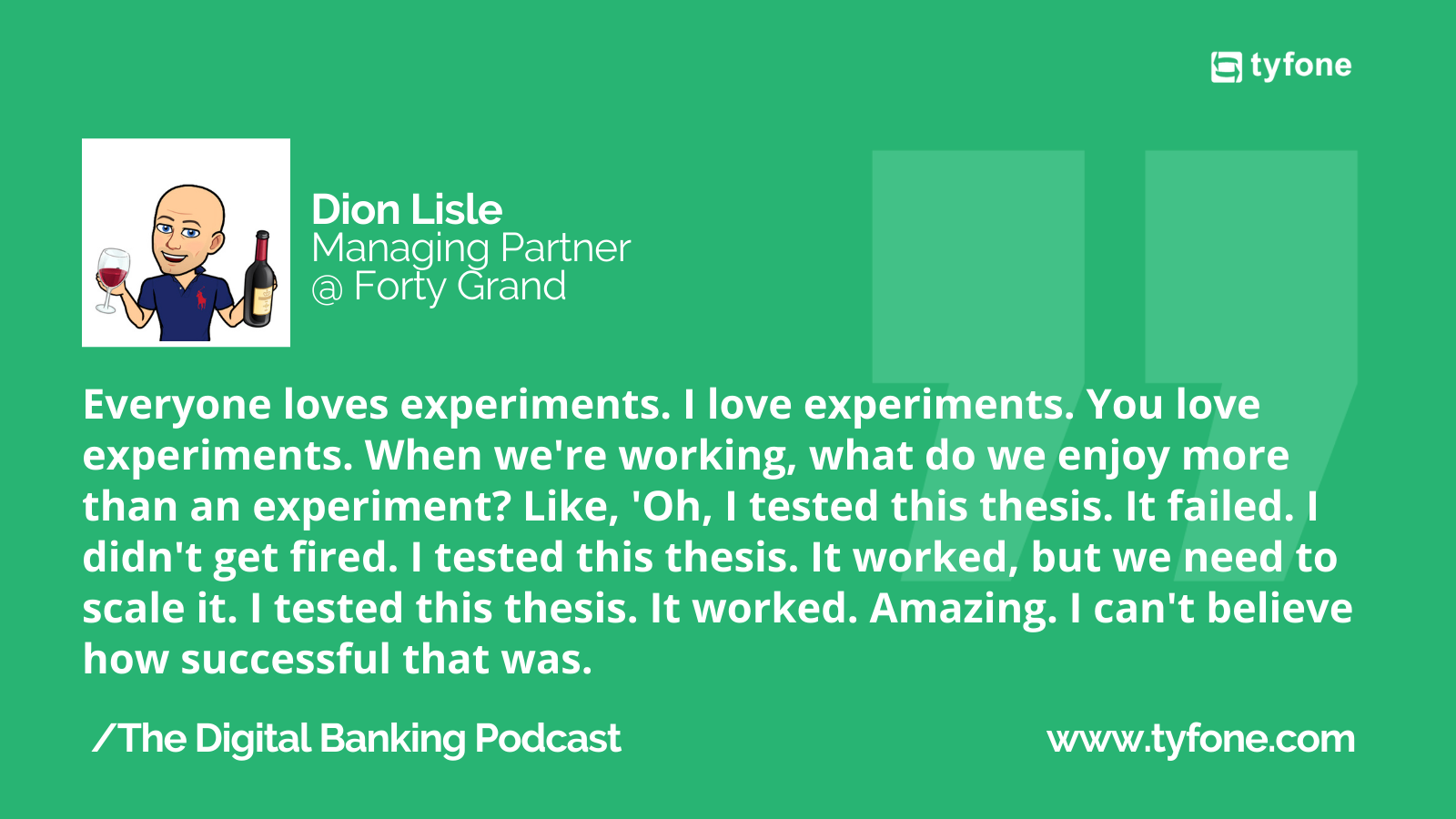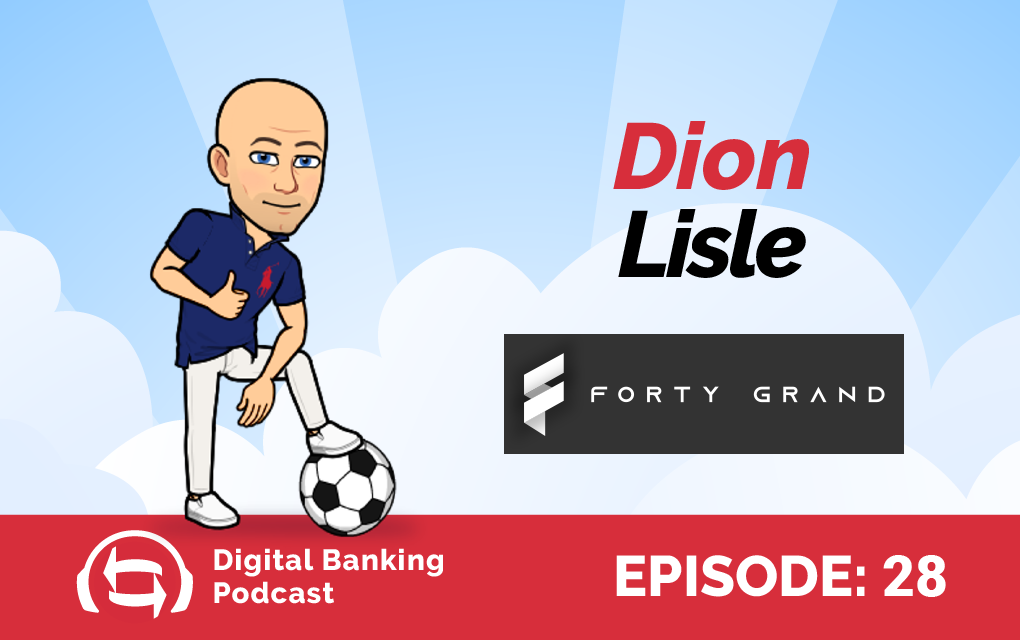Get to the Heart of Current Customer Needs with Dion Lisle
July 6, 2022
- Consumers are looking for different things from community financial institutions, but FIs aren’t meeting them with interesting and accurate marketing campaigns to forge a long-term, meaningful relationship.
- There’s a lot of room for FIs to experiment and learn more about what is most needed and valued by consumers.
- FIs often turn to hire a CTO or development team first, but that approach is destined to fail without making other key hires or action steps first.
If there’s any phrase that needs to be abolished for FIs, it’s: “But we’ve always done it this way.” That’s the key advice shared by Dion Lisle, Managing Partner at fintech advisory firm Forty Grand, in an episode of the Digital Banking podcast.
As Dion points out, one of the biggest challenges facing the entire industry is the different speed at which fintechs and Fis tyupically operate. Billing himself as the Rosetta Stone between them, Dion works to help banks and credit unions figure out how to target their customers and serve them more effectively. In a market where a new fintech gets opened every 30 minutes, it’s easy for FIs to stick to the “but that’s what we do” mindset; it’s overwhelming to consider all the options and find which ones are most appropriate for any given institution.
What worked then doesn’t work now, and Dion and Josh share some epic marketing plan fails in the banking world and discuss how data could help these institutions bring in younger customers and keep them.

FI Customers Want Instant, Self-Service, Easy Banking
Too many Fis rely on outdated methods that will get them easily overlooked in the marketplace. Where community FIs have a lot of room to beat their competition is in service and having the consumer’s back when that person needs it most.
But counting on someone to stick around because they’ve been a customer for a while? Dion says that’s a surefire way to fail. Instead, FIs have to think about how they’ve evolved lately and how that serves the customer.
“I think what’s happened is community FIs have this fantastic relationship with our customers. You have 15 years at a credit union, and that’s fantastic. Most of the banks I talked to have more SMB customers, but these are the longtime local machine shop, restaurant, coffee shop – whatever the case may be — construction company, and they have great long-term relationships. Now those same customers have iPhones. They know what instant is. They know what digital is. Their expectations have changed. The bank has not kept up with that. That’s the difference.”
Modern customers want modern solutions, but too many FIs are ignoring that major disconnect. Dion wants to know what banks have done to earn business from their customers lately.

Leverage Data More Effectively and Reap the Rewards
Too many FIs use the shotgun rather than the rifle approach in their marketing. This waste of time can be eliminated through the effective use of data. And to be clear, Fis have plenty of data. But as Dion shares, many of them have no data strategy or clear plan on how to employ this to their advantage.
“I talked to community FIs, and they don’t even have a data strategy. They know it’s hidden in their vault. They have data, but they don’t know what to do with it. They don’t know how to put it into context. They don’t know how to process it or make offers off of it.”
None of us mind offers just fricking make it contextual. That would be my message for the community FIS. You have the data to be contextual, like an old friend, like your very good credit union is, so do that with digital.”
Stop Thinking That Hiring a CTO Will Bring Your FI into the 21st Century
It’s a seemingly simple solution: Find the right person to drive the technology charge forward, and you’ll be all set, right? However, Dion says this leads to too many FIs wanting to skip the part of the process where they outline the support systems for that CTO. For that reason, too many new CTOs end up leaving in a matter of months.
“The fact is, putting a lone wolf to solve technology does nothing. You have to build it into your culture,” Dion notes.
Likewise, hiring a development team is a road to nowhere without a clear way to explain to that team what the end goal looks like. So many relationships between FIs and development teams fizzle out quickly because there’s no direction. Dion says a dev team shouldn’t be the first hire and that a solutions architect might be the better fit. By the time a development team is brought in, some of that foundational work is already complete.
Time to Quit Doing Things by the Book
Dion says that one of the most common things he hears is that there’s a process for each and every thing an FI does. But no one is really questioning that process or innovating it, so there’s no real purpose behind it. He recommends a process audit as a starting point for determining what procedures make sense and which ones need to be revised.
“Everyone says, ‘Oh, we have a process for ACH. We have a process for wire transfer.’ ‘Really? When did you last do a process audit?’ They’re like, ‘Well, what’s that?’ I’m like, ‘When did you last look at the steps required and question each step, and is it necessary to that?’ Do you know what the answer always is? ‘Never thought of it.'” Looking over the current approach to doing all these processes might reveal that some are outdated, no longer necessary, or have unintended consequences that harm the customer experience.
Dion says, “Those organizations have developed what I call organizational arthritis over time. They’re a little slow, little creaky, too many committees meeting to decide what committees are going to meet about.”
Instead of doing things a certain way because that’s how it’s been documented, Dion says it’s possible to experiment safely. Of course, experiments might fail, and that’s okay because some other experiments will really succeed. But it takes an FI being willing to use their data and create a hypothesis about why an experiment might work as a starting point.
While it doesn’t fall entirely on a bank to innovate every aspect of their practices, being willing to experiment and talking to current and potential customers show that the interest level is there, paving the way for the next steps and continued growth and loyalty.






